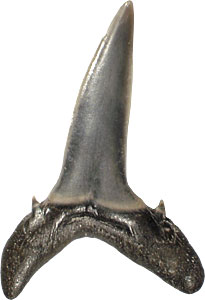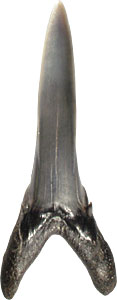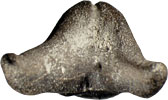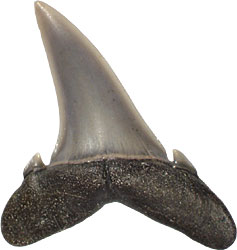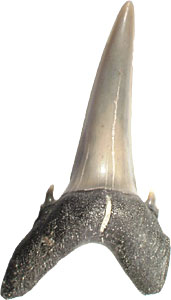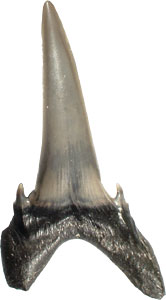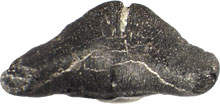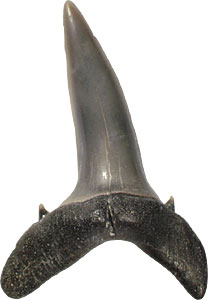
Order
LAMNIFORMES Berg,
1958
Family JAEKELOTODONTIDAE Glickman, 1964
Hypotodus verticalis
(Agassiz, 1843)
[Carcharias hopei]
All figured specimens were found in the middle Ypresian of Egem, Belgium. _______________________________________________________________________
__________________________
CAPPETTA,
H. & NOLF, D., 2005.
Révision de quelques
Odontaspididae (Neoselachii: Lamniformes) du Paléocène et de
l'Eocène du Bassin de la mer du Nord. (Revision of some Odontaspididae
(Neoselachii: Lamniformes) from the Palaeocene and Eocene of the North Sea
Basin). Bulletin de l'institut Royal des Sciences Naturelles de Belgique,
Sciences de la Terre/Aardwetenschappen 75: 237-266.
VAN
DEN EECKHAUT, G. & DE SCHUTTER, P., 2009. The
Elasmobranch Fauna of the Lede Sand Formation at Oosterzele (Lutetian, Middle
Eocene of Belgium). Palaeofocus, 1: 1-57, 2 figures, 2 tables, 22
plates
On
elasmo.com: A Review of and Comments on Cappetta &
Nolf 2005
Bourdon, Cunningham & De Schutter © 2006
In
the years before, Carcharias hopei had become a "waste basket"
for all sorts of sand tiger type teeth, also due to the proposal of Ward (1988)
that regrouped hopei Agassiz 1843, verticalis Agassiz 1843,
vincenti Winkler 1874, robusta Leriche 1921 and heinzelini
Casier 1966 under the designation Carcharias hopei (Agassiz, 1843).
This was only partly followed in Europe, as a lot of people kept considering
robusta and heinzelini as 2 distinct species.
The species robusta
was finally attributed to the genus Jaekelotodus by C&N 2005,
while Zhelezko created the genus Glueckmanotodus for the species
heinzelini
(Zhelezko & Kozlov, 1999).
Many
specimens attributed to hopei in the past, fit well in the Hypotodus
verticalis tooth design as proposed by Jim Bourdon on Elasmo.com
H. verticalis has only 2 upper anterior teeth, which justifies its
separate genus. This species is characterised by its very particular lower
antero-lateral teeth (Agassiz defined his species verticalis with
those teeth); and broad and distally inclined upper lateral teeth.
A lower jaw fragment from the Ypresian London Clay of Sheppey (UK) was figured
by Woodward (1899) and later by Ward (1988).

